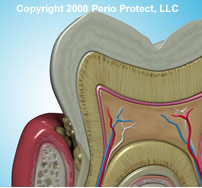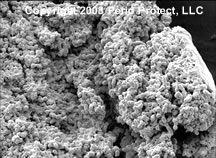Patient Information
Patient Information
You are not alone. Millions of Americans have gingivitis or periodontitis.
The disease is the body’s response to a bacterial infection in your gum tissue. Common symptoms of oral bacterial infections in the gum tissue include:

• Bleeding gums when brushing or flossing
• Receding gums (teeth appear longer)
• Obvious plaque, tartar or calculus
• Spaces developing between your teeth
• Swollen, red or tender gums
• Persistent bad breath
• Sensitive teeth
• Teeth are loose or mobile
Bacterial infections develop when food, bacteria, and tartar are left on the teeth. In the beginning, an infection can develop along the gum line. The bacteria form a community called a biofilm that grows down into the space or pocket that develops between the teeth and gum tissue. The biofilm is protected by a slimy covering produced by the bacteria in the community.
As the aerobic bacteria in the biofilm consume the oxygen in the pocket, the microbiological environment of the pocket is more suitable for dangerous anaerobic (no oxygen) bacteria. If a biofilm takes root and is left unchecked, biofilms can damage the gums, teeth, and bone. Untreated biofilms may even damage your health.
The main strategy for the control of biofilms below the gums includes scaling or deep cleaning, physically scraping the biofilm from the teeth and root surfaces. (JADA, August 2009). Dentists also have new laser options that may be appropriate for some patients.
The problem is that biofilms reform rapidly and need to be managed every day. Brushing and flossing are important, but they just don’t get deep enough below the gums to manage the biofilm regrowth. The Perio Protect approach helps patients address the bacterial regrowth with a comfortable tray delivery of medication below the gum line.
It’s important to talk to your doctor and hygienist about your conditions and treatment options. And it is important to treat periodontal disease if you have it.

